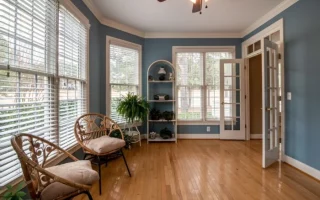Introduction:
When it comes to interior design and home improvement, even the most minor details can make a significant impact. One such detail that often sparks debate among homeowners and designers is the direction in which internal doors should open. Should they swing inward or outward? While it might seem like a minor decision, the direction of your interior doors can affect the flow of your space, accessibility, and overall functionality. Let’s explore the factors to consider when determining whether internal doors should open in or out.
Space Considerations

One of the primary factors to weigh when deciding the direction of your internal doors is the available space within the room. In smaller rooms or tight spaces, doors that swing inward can be problematic, as they may limit the usable floor area and create awkward or cramped conditions. In such cases, opting for doors that open outward can help maximize space efficiency and enhance the overall sense of openness within the room.
Accessibility and Safety
Accessibility is another crucial consideration when determining the direction of internal doors, particularly for individuals with mobility issues or disabilities. In many cases, building codes and accessibility standards mandate that doors within a home open in a specific direction to ensure ease of passage and compliance with safety regulations. For example, in areas such as bathrooms or bedrooms, doors that swing inward are often preferred to provide privacy and prevent accidental openings. However, doors that swing outward in an emergency or medical situation can facilitate easier entry for caregivers or emergency responders. Doors that swing outward may be preferred in rooms with fixtures or furniture close to the door frame, as inward-swinging doors could collide with obstructions, causing damage or injury.
Architectural Considerations
The architectural design of your home can also influence the direction in which internal doors should open. Factors such as the placement of load-bearing walls, structural elements, and door frames may dictate the feasibility of specific door swing configurations. For instance, in older homes with narrower doorways or unconventional layouts, the direction of the door swing may be limited by structural constraints. In such cases, homeowners may need to work within the existing framework of the space or consult with a professional contractor to explore alternative solutions.
Building Codes and Regulations
Building codes and regulations set forth by local authorities and governing bodies often dictate specific requirements for door swing direction, particularly in residential settings. These regulations are designed to ensure the safety, accessibility, and structural integrity of buildings and promote consistency and compliance within the construction industry. Before making any decisions regarding the direction of internal doors, homeowners should familiarize themselves with their area’s applicable building codes and regulations. Consulting with a licensed contractor or building inspector can provide valuable guidance and ensure your home improvements meet all necessary standards.
Practical Solutions
- Pocket Doors: Pocket doors slide into a recessed pocket within the wall, eliminating the need for swing space and maximizing usable floor area.
- Barn Doors: Barn doors slide along a track mounted above the doorway, offering a space-saving alternative to traditional swing doors.
- Bi-Fold Doors: Bi-fold doors consist of two panels that fold together accordion-style, allowing for partial or complete opening depending on the desired level of access.




